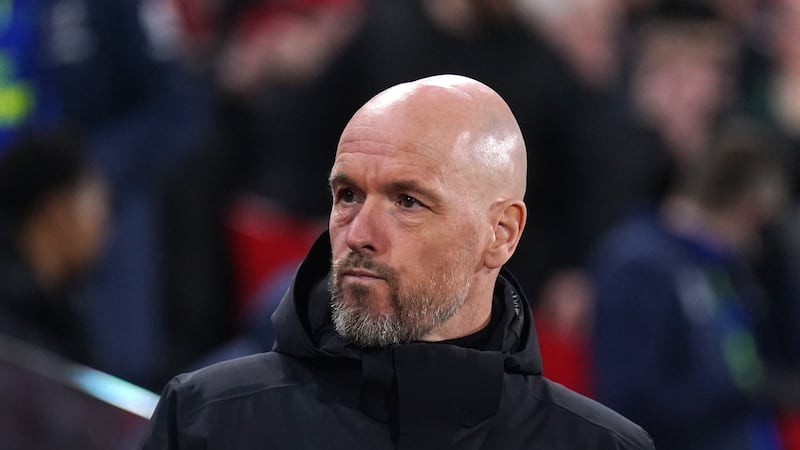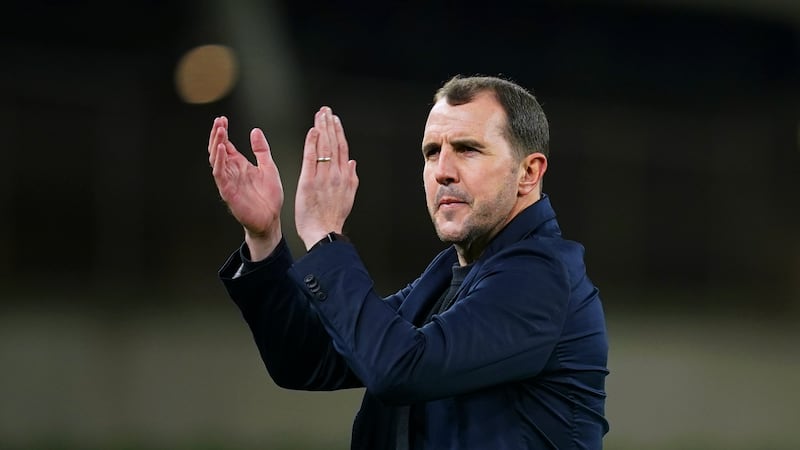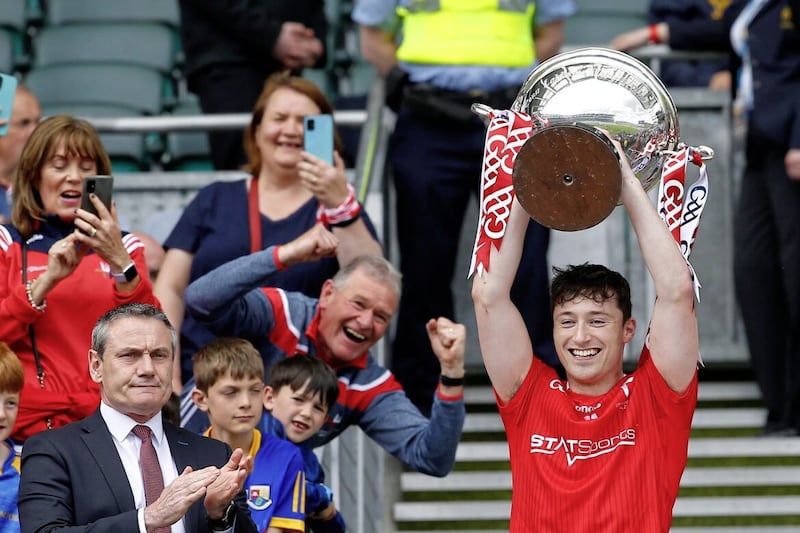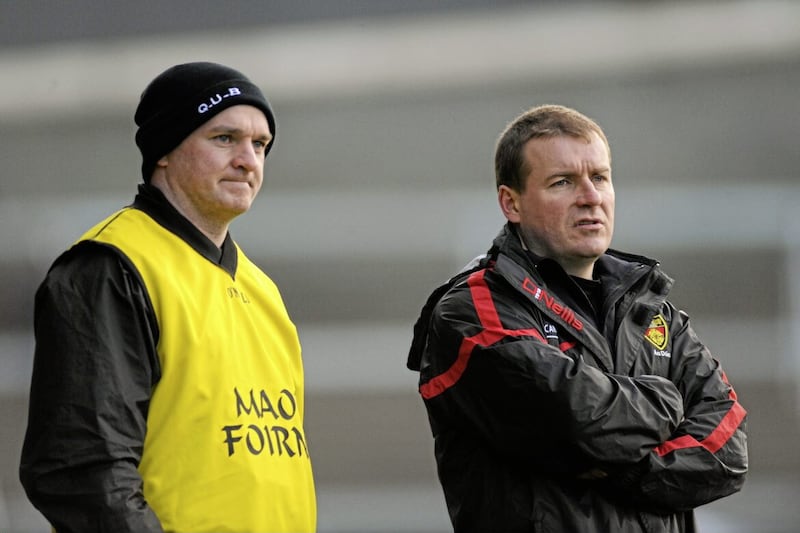ONE of the most staggering aspects of Ireland’s UEFA Nations League clash with Ukraine in neutral Lodz, Poland on Tuesday night was the blinding pace the game was played at.
Remember, this was a muggy June evening when managers and players had been lamenting the mental and physical fatigue following a long season.
Both sides went for the jugular from start to finish.
It was end to end, more like basketball than a football match – played at such a high tempo that Marcelo Bielsa’s Chile side would’ve admired.
It was a brilliant advertisement for the once maligned Nations League that seems to have caught the imagination of players and supporters alike.
It depends on which television coverage you tuned into on Tuesday evening but Kevin Doyle, flanked by Shay Given, on RTE described Ireland’s front-foot football as “absolutely brilliant”.
Nathan Collins’ first half goal was a piece of rare Irish art.
The big Burnley central defender won the ball back in Ukraine’s half of the field, broke clear of a couple of token challenges before showing spell-binding footwork to round the defender and slot the ball home with the outside of his right boot.
The run, the dribble, the finish was audacity itself.
Both Given and Doyle remarked during the interval how the Irish team had seven players in Ukraine’s half of the field when Collins won the ball back and embarked on an incredible run.
“It’s just a joy to see us with numbers forward,” said the former Ireland striker, “numbers in the box, not sitting back hoping to maybe break, hoping to maybe win a set piece and spend 90 minutes under the cosh.
“I’m going back over my time with Ireland and Shea’s time with Ireland and going away from home against a good team like Ukraine.
“You don’t be that far up the pitch. You’re always thinking: protect, be safe, get behind the ball – and we’re not doing that. We’re on the front foot and it really suits us.”
In a few, succinct sentences, Doyle summed up the tactical tragedy he was forced to comply with during his 62 caps for Ireland under Steve Staunton, Giovanni Trapattoni and Martin O’Neill.
There were times during Doyle’s international career where he would chase down his own flicked headers. That’s how dysfunctional Ireland’s attack was during the last decade or more.
But this was Ireland’s way; ‘heroic’ backs-to-the-wall stuff, the empty you’ll-never-beat-the-Irish mantra, lauded and romanticised for a generation or more in what was largely an incoherent way to play the game.
During Doyle’s time, Ireland were no longer putting the opposition ‘under pressure’ – they were mindlessly burning up energy and disabling their own attackers into the bargain.
There was nothing heroic in sitting deep, inviting pressure and pumping long balls up that would invariably come straight back down Ireland’s throat.
What’s really heroic is playing a high defensive line; it’s Josh Cullen wanting the ball in tight spaces and playing with his head up. It’s leaving a couple of holes at the back in order to punch holes in the opposition’s defence.
It’s pressing as hard and as high and as often as possible as Ireland did against Ukraine and Scotland.
And yet, for most of his 26-game reign, the target on Stephen Kenny's back has always been significantly bigger than the respective targets on Trapattoni, O'Neill or McCarthy.
Of course, it was no utopia for the aforementioned trio. They had their critics too, but in some quarters, the commentary just seems a bit more scathing towards the current managerial incumbent.
For Mick McCarthy loyalists like Richard Dunne and Gary Breen, they will always look down their noses at a manager who has climbed from League of Ireland status up football's rungs to the top job in the country.
And when he gets there, they insinuate that he's indulging in some vanity project by daring to play a different way than his predecessors.
Roy Keane once said it took him 25 caps before he felt acclimatised to international football.
Kenny, who can only dream of working with great players of by-gone days, has effectively had to build an international team from scratch, and behind closed doors for a year, whose nucleus has 'rookie' written all over it, and which prompted Johnny Giles to describe the current squad as the “least gifted group of players” he can remember.
And yet, the magnifying glass cast by some of the ex-pros over the manager's reign is that he didn't play an extra holding midfielder against Armenia and Ukraine (at home).
A correct assertion, as Ireland’s full-backs didn’t “invert” as much as they should have done to cover the spaces in midfield.
But they should consider the tactical avenues and innovation Kenny is exploring compared to ‘parking the bus’, as successive Ireland managers did before him.
That's why it was refreshing to listen to Doyle - a striker, not a defender like Dunne, Breen or Damien Delaney - because no-one chased as many lost causes than the Wolves front man did for over a decade and appreciated the futility of doing so.
Because the media punditry can be so heightened and sharp, it's exceptionally difficult for any manager to be given time and space to build something.
After Ireland’s 3-0 win over Scotland, Kenny observed: “After Belgium here, 2-2, people thought we were absolutely brilliant, then we win 1-0 the next game [against Lithuania] and then lose a game [against Armenia] and then it's a catastrophe.”
A pundit’s narrative becomes an exercise in dogma; once they assume a position on the manager’s philosophy they feel that it’s a weakness to allow their opinions to evolve into something else.
And they can always wait for the next catastrophe to arrive.
Everyone wants their own theories to be proved right (including this writer) – but as Stephen Kenny goes about trying to modernise a footballing culture that has been stuck in prehistoric times for far too long, the size of the target on his back always seems desperately big in comparison to his predecessors.








